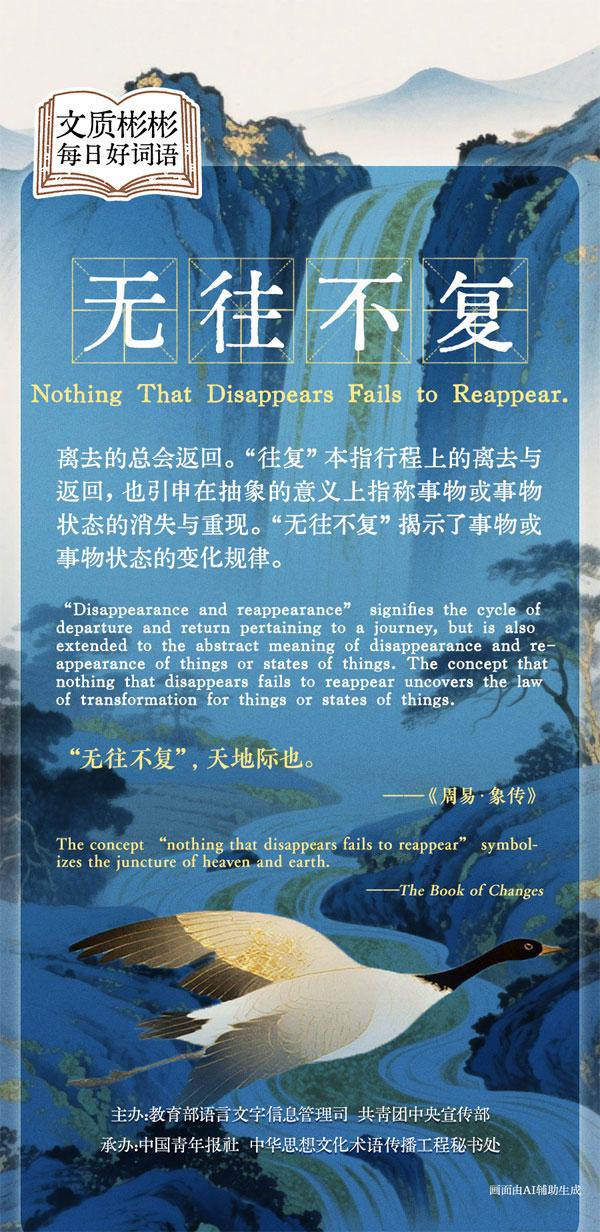

离去的总会返回。“无往不复”一说出自《周易·泰卦》九三爻的爻辞。“往复”本指行程上的离去与返回,也引申为抽象意义上事物或事物状态的消失与重现。从卦象上来说,泰卦乾下坤上,乾象征天,坤象征地。九三爻正处于乾坤相交之处,也即是处于事物即将发生变化的临界点。乾虽初始在下,必复归于上;坤虽初始在上,必复归于下。“无往不复”揭示了事物或事物状态的变化规律。
Nothing That Disappears Fails to Reappear
This concept stems from The Book of Changes. "Disappearance and reappearance" signifies the cycle of departure and return pertaining to a journey, but is also extended to the abstract meaning of disappearance and reappearance of things or states of things. In the hexagram context of The Book of Changes, tai hexagram has qian (heaven) at the bottom and kun (earth) on top. This hexagram is situated at the junction of qian and kun, the pivotal point where shifts are imminent. Though qian starts from the bottom, it ultimately returns to the top, and while kun begins from the top, it eventually returns to the bottom. The concept that nothing that disappears fails to reappear uncovers the law of transformation for things or states of things.
引例1:无平不陂,无往不复,艰贞无咎。(《周易·泰卦》)(没有绝对平坦的道路,也没有一去不返的历程,在艰难处境中坚守正道,可免除祸患。)
Flat ground is not without tilt, and nothing that disappears fails to reappear. Despite the challenges brought by changes, integrity helps avert disaster. (The Book of Changes)
引例2:“无往不复”,天地际也。(《周易·象传》)(“事物循环往复”,这是天地运行的法则。)
The concept "nothing that disappears fails to reappear" symbolizes the juncture of heaven and earth. (The Book of Changes)(整理/蒋肖斌 制图/汪琪(实习生))

版权所有:中华人民共和国教育部 中文域名:教育部.政务
京ICP备10028400号-1 京公网安备11010202007625号 网站标识码:bm05000001